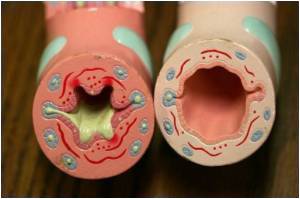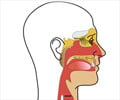The body generally responds with a coordinated response of immune-cell proliferation and attack that rapidly clears the pathogen when you get an acute infection, such as influenza.

But what about chronic infection? In the case of such pathogens as hepatitis C, HIV, and malaria, the body and the pathogen essentially fight to a prolonged stalemate, neither able to gain an advantage. Over time, however, the cells become "exhausted" and the immune system can collapse, giving the pathogen the edge.
Now, a new study by researchers at the Perelman School of Medicine, University of Pennsylvania, is showing just how that happens. The findings also suggest a novel therapeutical approach that might be used to shift the balance of power in chronic infections. The study appears in the November 30 issue of Science.
The team, led by E. John Wherry, PhD, associate professor of Microbiology and Director of the Institute for Immunology, used a mouse model of chronic viral infection to map the T-cell response that arises when the immune system is on an extended war footing. They found that two distinct classes of virus-specific CD8+ T cells - one expressing high levels of the protein T-bet, the other expressing high levels of the protein Eomes, work together to keep the infection in check.
Specifically, they found that the two cell populations appear to have a progenitor-mature cell relationship. The T-bet-expressing cells appear to function as the progenitor cells - that is, stem cells. These cells divide both to regenerate and maintain the pool of virus-specific T cells. But they also divide and differentiate to form mature, terminally differentiated Eomes-expressing cells. These cells are more effective at fighting the virus itself, but cannot replicate.
"There's a balance, an equilibrium, which allows you to maintain control over the infection but is insufficient to give you complete clearance," Wherry explains.
Advertisement
Loss of either subpopulation, which the researchers modeled by deleting one or the other protein, reduces the immune system's ability to fight the infection, leading to a shift in favor of the pathogen.
Advertisement
"Our data suggest the reason for loss of immune control during some chronic infections is that the long-term pressure on this progenitor-mature cell relationship depletes the progenitor pool," he says.
What's more, the study suggests new therapeutic avenues that can be used to fight, or at least better control, chronic infections. For instance, he says, "If we can maintain these progenitor cells longer, or coax the terminal progeny to divide further, we may be able to shift the balance and maintain control of the infection," he says.
Wherry's lab is now studying candidate molecular pathways to determine their efficacy in controlling, and perhaps modulating, these two T-cell populations.
Penn authors include Michael A. Paley, Pamela M. Odorizzi, Jonathan B. Johnnidis, Douglas V. Dolfi, Burton E. Barnett.
Source-Newswise















